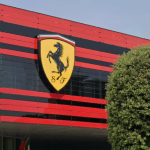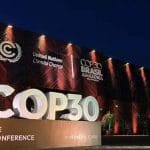Air Liquide Launches World First Industrial Ammonia to Hydrogen Unit

• Air Liquide starts up a 30-ton-per-day ammonia-to-hydrogen cracking unit in Antwerp-Bruges, the first of its kind at industrial scale.
• The technology strengthens the feasibility of long-distance hydrogen supply chains by using ammonia as a globally traded carrier.
• The breakthrough supports decarbonization for industry and mobility and provides a new pathway to scale low-carbon and renewable hydrogen markets.
Antwerp-Bruges advances global hydrogen logistics
Air Liquide has started operations at the world’s first industrial-scale ammonia cracking pilot unit, a 30-ton-per-day facility designed to convert ammonia back into hydrogen with commercial efficiency. The launch marks a step forward for producers, policymakers, and investors who have been waiting for scalable solutions that can anchor cross-border hydrogen trade.
The pilot unit, located at the port of Antwerp-Bruges, is sized to demonstrate that ammonia cracking — long viewed as technically promising but commercially constrained — can operate at industrial levels without compromising safety or yield. It also fills a long-standing gap between renewable hydrogen production in resource-rich regions and demand centers in Europe and Asia.
“At a global level, access to hydrogen hinges on the ability to transport it efficiently,” a senior Air Liquide engineer said during the launch briefing. Ammonia, which binds hydrogen with nitrogen, has emerged as the most plausible carrier. It is already produced and shipped worldwide using established infrastructure, offering a ready-made platform for energy trade.
A new technology block for the emerging hydrogen economy
Governments and investors have been clear that the long-distance movement of hydrogen is essential for the energy transition. Yet pipelines, liquefaction routes, and synthetic carriers each come with cost or feasibility constraints. Ammonia offers a workaround: it can be produced at low cost in regions with plentiful solar, wind, or hydropower, shipped at scale, then cracked back into hydrogen near demand centers.
Air Liquide’s new unit is structured to prove that final step. The company has developed proprietary innovations across several areas: advanced catalysis systems to improve cracking efficiency, enhanced ammonia combustion design, refined materials testing protocols, upgraded process safety, and high-purity molecule separation. These elements strengthen the case for gigawatt-scale cracking plants, which would allow Europe and Asia to import low-carbon hydrogen from regions such as the Middle East, Australia, Latin America, and parts of Africa.
This diversification of supply matters for energy security as well as climate risk management. Hydrogen demand from steel, chemicals, mobility, and power generation is projected to grow sharply through 2030, yet the build-out of domestic renewable hydrogen remains uneven. Imported volumes will be necessary for several markets to stay aligned with net-zero targets.
Executive perspective and industry reception
Armelle Levieux, a member of Air Liquide’s Executive Committee overseeing Innovation, Technology, and Hydrogen Energy, emphasized the strategic importance of the development. “The commissioning of our ammonia cracking pilot unit in Antwerp is a key milestone. This is a world’s first which paves the way for new low-carbon hydrogen supply chains. By proving the viability of industrial-scale ammonia cracking, Air Liquide demonstrates its capacity to innovate and provide concrete solutions for its customers, and contributing to the Energy Transition. I am immensely proud of the work and commitment of all our teams who made this achievement possible.”

Industrial players tracking hydrogen import corridors, including major utilities, chemical companies, and steelmakers, have been watching the project closely. Two executives from separate European hydrogen consortia described the unit as “the missing technical piece” needed to validate ongoing discussions for ammonia-based supply routes starting later this decade.
RELATED ARTICLE: Air Liquide and Vopak Forge Partnership for Singapore’s Hydrogen Future
Strategic implications for investors and policymakers
For investors, the breakthrough lowers uncertainty around one of the most cost-critical steps in the hydrogen value chain. Ammonia cracking has been central to forward projections used in EU hydrogen import strategies, Japan and South Korea’s energy transition plans, and Gulf states’ export roadmaps. But feasibility at industrial scale remained speculative until now.
The technology could also support the global expansion of renewable hydrogen certification frameworks. If policymakers integrate ammonia-to-hydrogen conversion into Guarantee of Origin systems, it may accelerate liquidity for traded low-carbon molecules. That would have implications for corporate procurement strategies, particularly in chemicals, shipping, and heavy industry.
A global shift toward fungible hydrogen markets
Hydrogen’s role in net-zero plans depends on developing trade flows that resemble today’s LNG market: large, flexible, and international. Air Liquide’s facility demonstrates that cracking technology can be scaled, potentially transforming ammonia into a globally fungible energy carrier.
The pilot unit in Antwerp-Bruges gives governments and companies a clearer basis for designing long-term import contracts, developing port infrastructure, and aligning climate investment with realistic logistics. As hydrogen demand grows, the ability to convert ammonia efficiently at receiving hubs may determine which regions lead the next phase of the energy transition.
With this launch, Air Liquide has moved ammonia-based hydrogen trade from concept toward commercial reality — a shift that will influence global energy planning, industrial decarbonization pathways, and the investment calculus shaping the future of low-carbon supply chains.
Follow ESG News on LinkedIn












